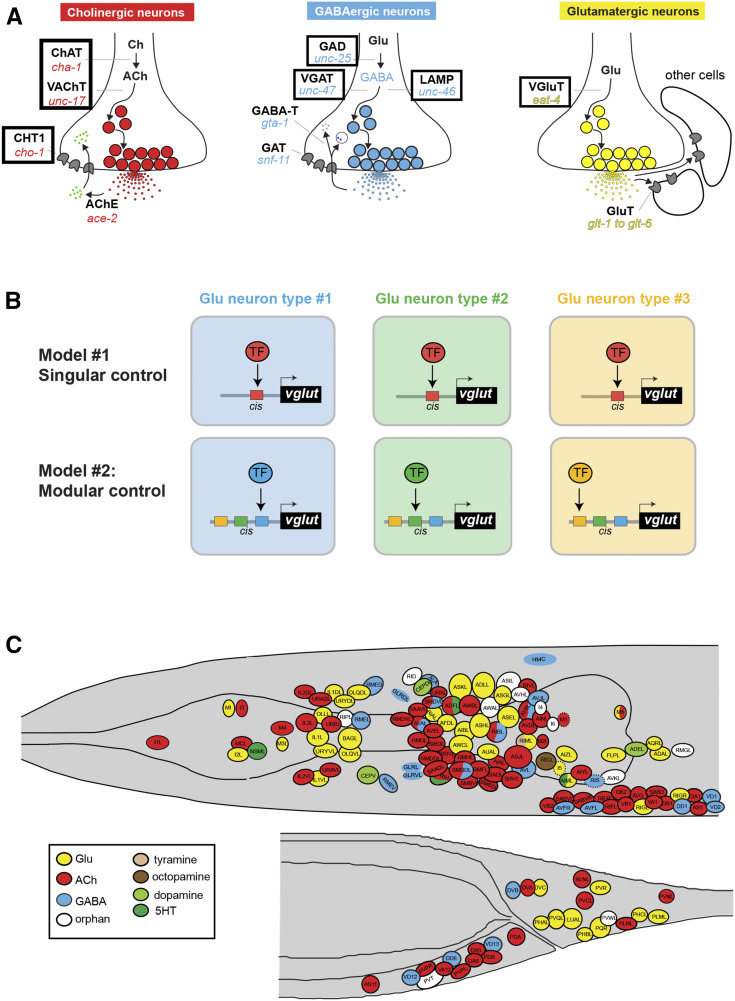Figure 1.
Introduction to the problem of neurotransmitter identity specification. (A) Neurotransmitter pathway genes. In this paper, fluorescence reporters were generated for cis-regulatory elements contained in the regulatory regions of the genes highlighted in boxes. (B) Conceptual models for how the shared phenotypic trait of neurotransmitter identity could be regulated in different neuron types. Previous studies as well as this paper corroborate the modular control model. However, as we will show here in this paper, there are cases where the same transcription factor (TF) is used in multiple different neuron types (seemingly in support of the singular model), but this is usually because a given TF usually operates in distinct combinations in different cell types, as discussed in the text. For simplicity, these two models just focus on the question of whether a specific neurotransmitter identity is controlled by single TFs. (C) Neurotransmitter atlas of the C. elegans adult hermaphrodite head and tail. Adapted from Gendrel et al. (2016).; ChAT, choline acetyltransferase; VAChT, vesicular acetylcholine (ACh) transporter; CHT1: choline reuptake transporter, AChE: acetylcholinesterase, GAD: glutamic acid decarboxylase; VGAT, vesicular GABA transporter; GABA-T, GABA transaminase GAT, GABA transporter; LAMP, lysosomal associated membrane protein; GluT, Glutamate transporter; 5HT, 5-hydroxytryptamine; ACh, acetylcholine; Ch, choline; GABA, γ-aminobutyric acid; Glu, glutamate; TF, transcription factor.

